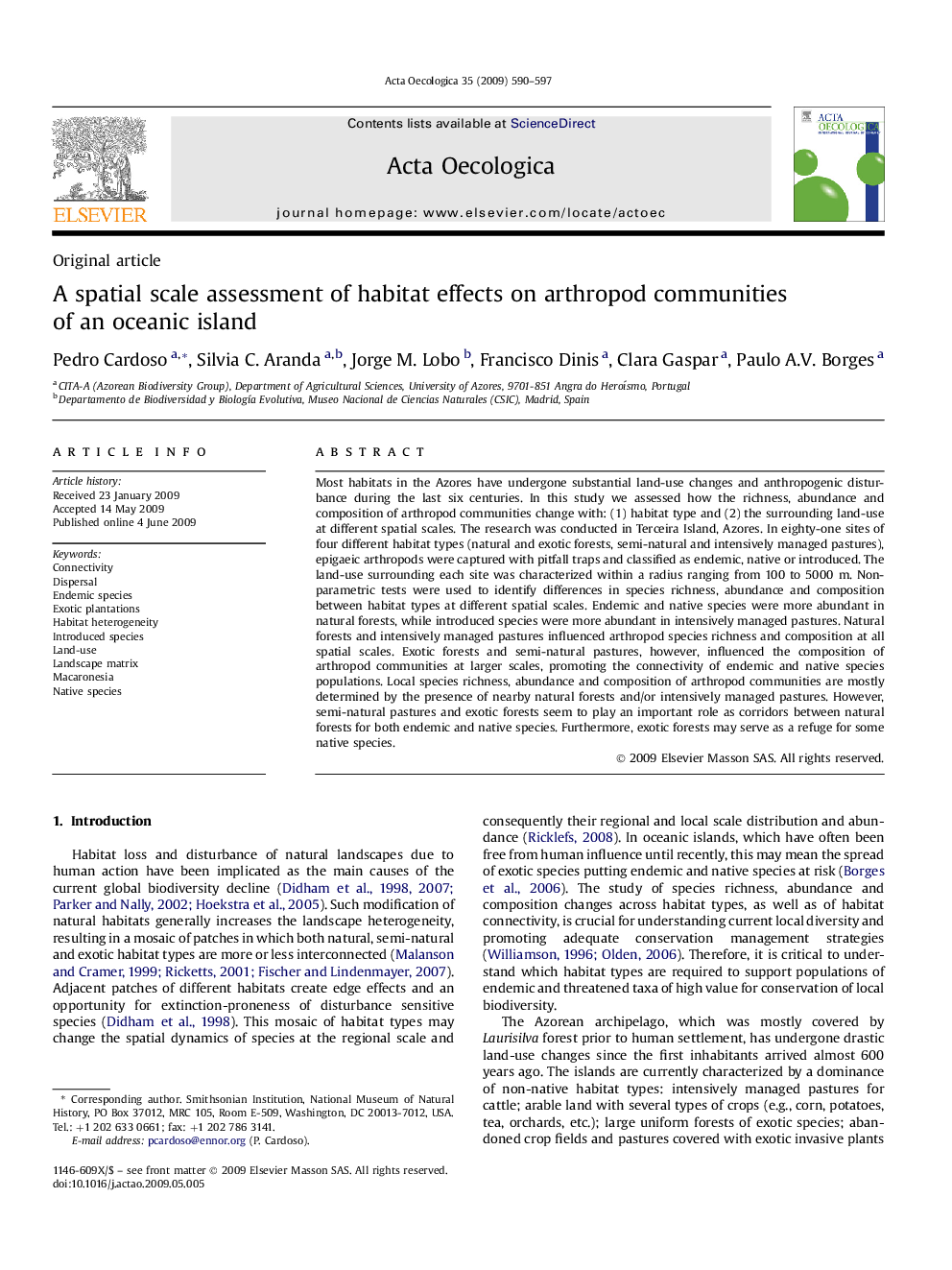| Article ID | Journal | Published Year | Pages | File Type |
|---|---|---|---|---|
| 4381421 | Acta Oecologica | 2009 | 8 Pages |
Most habitats in the Azores have undergone substantial land-use changes and anthropogenic disturbance during the last six centuries. In this study we assessed how the richness, abundance and composition of arthropod communities change with: (1) habitat type and (2) the surrounding land-use at different spatial scales. The research was conducted in Terceira Island, Azores. In eighty-one sites of four different habitat types (natural and exotic forests, semi-natural and intensively managed pastures), epigaeic arthropods were captured with pitfall traps and classified as endemic, native or introduced. The land-use surrounding each site was characterized within a radius ranging from 100 to 5000 m. Non-parametric tests were used to identify differences in species richness, abundance and composition between habitat types at different spatial scales. Endemic and native species were more abundant in natural forests, while introduced species were more abundant in intensively managed pastures. Natural forests and intensively managed pastures influenced arthropod species richness and composition at all spatial scales. Exotic forests and semi-natural pastures, however, influenced the composition of arthropod communities at larger scales, promoting the connectivity of endemic and native species populations. Local species richness, abundance and composition of arthropod communities are mostly determined by the presence of nearby natural forests and/or intensively managed pastures. However, semi-natural pastures and exotic forests seem to play an important role as corridors between natural forests for both endemic and native species. Furthermore, exotic forests may serve as a refuge for some native species.
